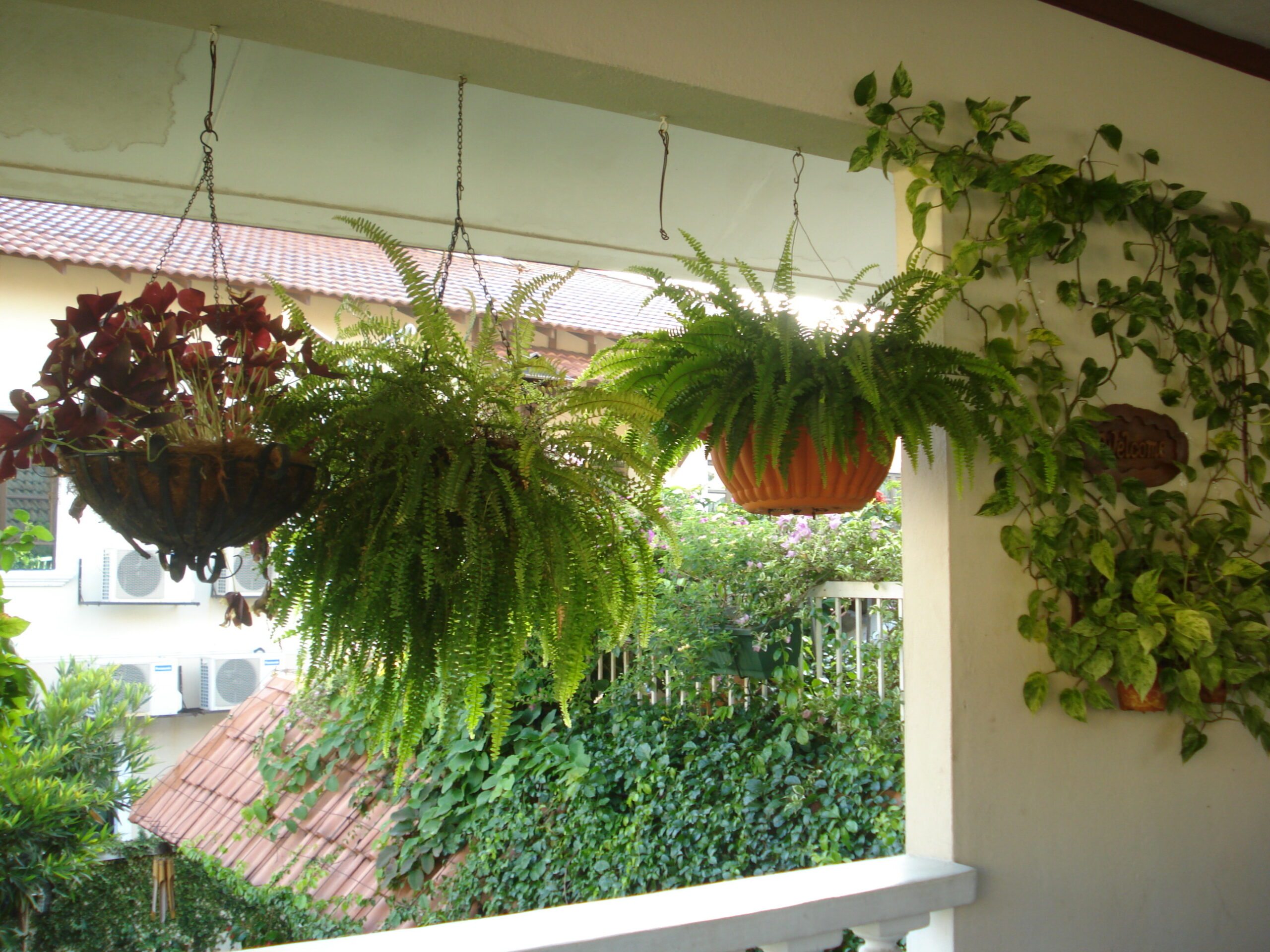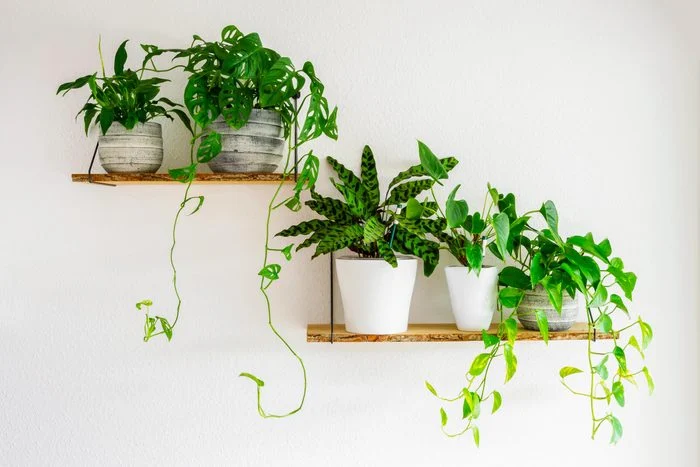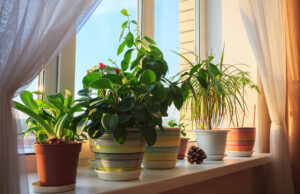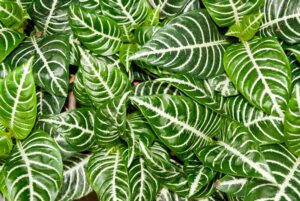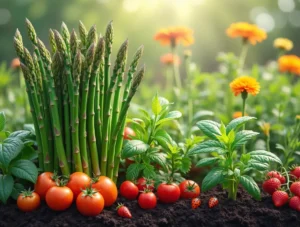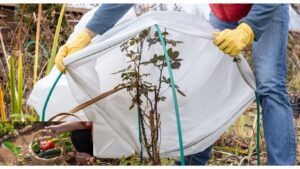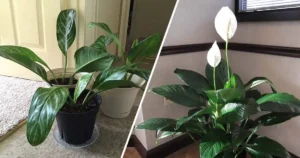The Joy of Houseplants
Houseplants have an incredible ability to transform indoor spaces, bringing a touch of nature into our homes and workspaces. The sight of lush green leaves, the feeling of nurturing a living organism, and the joy that comes with seeing it thrive—all contribute to the unique satisfaction that plant care offers. For many, houseplants become more than just decorative elements; they evolve into cherished companions that bring a sense of peace and well-being.
Caring for houseplants, however, can be intimidating for beginners, especially those who have struggled to keep plants alive in the past. This guide is designed to provide clear, practical advice to help you succeed in your houseplant journey, no matter your experience level.
On This Page
Choosing the Right Houseplants
Understanding Your Space
Before purchasing a plant, evaluate the environment where it will live. Consider factors such as:
- Sunlight: Determine the level of natural light available in the chosen spot. Is it a bright area that receives direct sunlight, or is it a more shaded location? Plants vary widely in their light needs, so matching the plant to the available light is essential.
- Temperature: Consider the temperature consistency of the location. Some plants prefer warm, stable environments, while others can tolerate cooler, fluctuating conditions.
- Humidity: The level of humidity in the air can significantly affect certain plants, particularly tropical varieties. High-humidity plants may struggle in dry indoor air unless special care, such as regular misting or the use of a humidifier, is provided.
Reading the Tag
When selecting a plant at the nursery, read the tag for key details about its needs, including:
- Light Requirements: Whether the plant needs full sun, partial shade, or low light.
- Watering Needs: How often and how much water the plant requires.
- Temperature Range: The ideal temperature range for the plant’s growth.
By aligning this information with the conditions in your home, you can significantly increase the chances of your plant thriving.
The Nursery Experience
Shopping for plants can be exciting, but it’s important to approach it with a discerning eye. A healthy plant is more likely to adapt well to your home and grow robustly. Here are some tips to help you choose the best plant:
- Inspect the Foliage: Look for plants with vibrant, healthy leaves that are free of discoloration, spots, or wilting. Avoid plants with yellowing or browning leaves, as these can be signs of stress or disease.
- Check the Roots: Gently remove the plant from its pot to inspect the root system. Healthy roots should be white or light brown and firm to the touch. If the roots are dark, mushy, or circling around the pot (a condition known as root-bound), the plant may be stressed and in need of immediate repotting.
- Pest Inspection: Examine the plant for any signs of pests, such as small insects, webbing, or sticky residue. Bringing home a plant with pests can quickly lead to infestations that affect your other plants.
By taking these steps, you’ll be better equipped to choose a plant that’s healthy and suited to your home environment.
Potting and Repotting
The Importance of Drainage
Proper drainage is crucial for your plant’s health. Drainage allows excess water to escape, preventing the roots from sitting in waterlogged soil—a condition that can lead to root rot, a common and often fatal issue for houseplants.
- Choosing the Right Pot: Always select a pot with drainage holes at the very bottom. Pots with holes on the sides or elevated bottoms can trap water, leading to unhealthy conditions for your plant. If you find a decorative pot that you love but it lacks drainage, consider placing your plant in a smaller plastic pot with drainage holes and then setting that pot inside the decorative one. This method, known as double potting, allows you to enjoy the aesthetic of your chosen pot without sacrificing your plant’s health.
Repotting Technique
Repotting is an essential part of plant care, especially as your plant grows and its root system expands. However, repotting can be stressful for plants, particularly if it’s done incorrectly. Here’s a step-by-step guide to repotting your plants with minimal stress:
- Timing: First, make sure that your plant actually needs repotting. Signs that it’s time to repot include roots growing out of the drainage holes, the plant becoming top-heavy, or water sitting on top of the soil rather than being absorbed.
- Preparation: Water your plant the day before you plan to repot it. This helps reduce shock and makes the root ball easier to remove from the old pot.
- Moisten the Soil: Before adding new soil to the pot, moisten it slightly. The soil should be damp enough to clump together when pressed, but not so wet that it drips. This moisture encourages the roots to spread out into the new soil.
- Transferring the Plant: Fill the bottom of the new pot with a layer of soil. Carefully remove the plant from its old pot by tipping it upside down and gently pulling on the base of the stem. Place the plant in the new pot and add soil around the sides, pressing down lightly to eliminate air pockets. Be sure to leave some space at the top of the pot to allow for watering.
- Watering: After repotting, give the plant a small amount of water. This helps settle the soil and provides the roots with the moisture they need to start growing into their new environment.
Repotting can be a delicate process, but when done correctly, it can significantly benefit your plant, providing it with more room to grow and fresh soil rich in nutrients.
Watering Houseplants
Finding the Right Balance
Watering is perhaps the most misunderstood aspect of plant care. Both over-watering and under-watering can lead to a range of problems, from root rot to wilting, and even death. However, understanding a few basic principles can help you water your plants correctly.
- Checking Soil Moisture: The simplest way to determine if your plant needs water is to check the soil moisture. Insert your finger into the soil up to the first knuckle (about 2-3 centimeters deep). If the soil feels dry at this depth, it’s time to water. If it’s still moist, wait a few days and check again.
- Watering Technique: When watering, do so slowly and evenly until you see water begin to drain from the bottom of the pot. This ensures that the entire root system gets watered. However, avoid letting water sit in the saucer beneath the pot for extended periods, as this can lead to the roots becoming waterlogged. If water collects in the saucer, drain it off after a few minutes.
- Frequency of Watering: Most plants prefer their soil to dry out slightly between waterings. The frequency will depend on the type of plant, the size of the pot, and the environmental conditions. In general, plants need more water during the growing seasons (spring and summer) and less during their dormant periods (fall and winter).
Water Temperature
An often overlooked aspect of watering is the temperature of the water. Plants can be sensitive to water that is too hot or too cold.
- Summer: In the warmer months, plants prefer cooler water, which can help refresh them.
- Winter: During the colder months, use room-temperature water to avoid shocking the roots, which are more sensitive during this period.
By paying attention to these details, you can significantly improve your plant’s health and longevity.
Nutrition
The Role of Fertilizer
In addition to water and light, plants need nutrients to grow, which they usually get from the soil. However, the nutrients in potting soil can become depleted over time, especially in a confined environment like a pot. This is where fertilizer comes in—it replenishes the essential nutrients and promotes healthy growth.
- Types of Fertilizer: There are many types of fertilizers available, but for beginners, a balanced, all-purpose liquid fertilizer is often the best choice. This type of fertilizer works well for most houseplants and is easy to use.
- Feeding Schedule: During the growing season (typically spring and summer), most houseplants benefit from being fed every two to four weeks. However, be sure to follow the instructions on the fertilizer package, as over-fertilizing can cause more harm than good. In the winter, most plants enter a period of dormancy and do not require fertilization.
- Application: When applying liquid fertilizer, mix it with water according to the package directions. Then water your plant as usual, ensuring the fertilizer reaches the root zone where it can be absorbed. Be sure to avoid getting fertilizer on the leaves, as it can cause burns.
By regularly feeding your plants, you provide them with the nutrients they need to grow strong and healthy, leading to more vibrant foliage and, in some cases, flowers.
Light
Understanding Light Requirements
Light is one of the most crucial factors in a plant’s health, as it is the primary source of energy through photosynthesis. However, different plants have varying light requirements, and understanding these needs is key to choosing the right spot for your plant.
- Direct vs. Indirect Light: Some plants thrive in direct sunlight, where they receive several hours of bright light each day. Examples include succulents and cacti. Other plants, such as ferns and certain tropical plants, prefer indirect light, which is bright but diffused, often found near a window with a sheer curtain or in a well-lit room without direct sunlight.
- Low Light: Some plants can tolerate low-light conditions, making them ideal for rooms with minimal natural light. These plants, such as snake plants and ZZ plants, are often more forgiving and can survive in spaces like offices or bathrooms with small windows.
Adjusting Light Exposure
As the seasons change, so does the amount of natural light that enters your home. During the darker winter months, you may need to move your plants closer to a light source to ensure they get enough energy. However, be cautious when moving plants, as they can be sensitive to changes in their environment.
- Gradual Adjustment: If you need to move your plant, do so gradually. Sudden changes in light exposure can cause stress, leading to leaf drop or stunted growth. For example, if moving a plant to a brighter spot, start by placing it in the new location for a few hours each day, gradually increasing the time until it adjusts to its new environment.
- Artificial Light: In areas with very low natural light, or during the winter, consider using grow lights to supplement natural light. These specially designed lights provide the full spectrum of light that plants need for photosynthesis and can help maintain healthy growth when natural light is insufficient.
Understanding your plant’s light needs and adjusting its environment accordingly can make a significant difference in its overall health and vitality.
Temperature
Maintaining the Right Temperature
Temperature is another critical factor in plant care, as most houseplants are sensitive to extremes.
- Consistent Temperature: Aim to keep your plants in an environment where the temperature remains relatively consistent. Most houseplants prefer temperatures between 18°C and 24°C (65°F and 75°F). Sudden drops or increases in temperature can stress plants, leading to issues like leaf drop or slowed growth.
- Avoiding Extremes: Be mindful of where you place your plants in relation to windows, air-conditioning units, heaters, and radiators. Plants positioned too close to these can experience extreme temperatures, which can be detrimental to their health. For example, a plant placed near a drafty window might suffer from cold stress, while one near a radiator might dry out too quickly.
Using a Temperature Tracker
If you’re concerned about maintaining the right temperature for your plants, consider using a temperature and humidity monitor. These devices can help you keep track of the conditions in your home and ensure that your plants are in an environment that supports their growth.
Grooming and Pruning Houseplants
The Importance of Grooming
Regular grooming is essential for maintaining the health and appearance of your houseplants. Grooming includes tasks such as removing dead leaves, trimming back overgrown stems, and cleaning the leaves to remove dust and debris.
- Removing Dead Foliage: Dead and decaying leaves not only detract from the plant’s appearance but also attract pests. Regularly inspect your plants and remove any yellowing or brown leaves by gently pulling them off or using clean scissors or pruning shears. This practice helps keep your plant healthy and prevents the spread of disease.
- Pruning: Pruning is the process of cutting back parts of the plant to promote healthy growth. When pruning, focus on removing leggy stems, spent flowers, and any damaged or diseased parts. Pruning helps shape the plant, encourages fuller growth, and can even stimulate flowering in some species.
Cleaning the Leaves
Dust can accumulate on the leaves of houseplants, blocking light and reducing their ability to photosynthesize. Regularly clean the leaves of your plants by wiping them with a damp cloth. For plants with delicate or small leaves, you can also rinse them gently with water.
- Shining the Leaves: Some people like to use commercial leaf-shining products, but these can clog the pores (stomata) of the leaves. It’s generally best to stick with plain water or a mild soap solution for cleaning.
By keeping your plants well-groomed, you help ensure they stay healthy, grow vigorously, and look their best.
Insects and Bugs
Preventing Pests
One of the most common challenges in houseplant care is dealing with pests. Indoor environments can attract various pests, such as aphids, spider mites, and fungus gnats, which can cause significant damage to your plants if not promptly addressed.
- Regular Inspection: Make it a habit to inspect your plants regularly for signs of pests. Common indicators include tiny webs, sticky residue on leaves, or small insects visible to the naked eye. Early detection is key to preventing a minor infestation from becoming a major problem.
Treating Infestations
If you do discover pests on your plants, don’t panic—most infestations can be treated effectively with a little care and attention.
- Soap and Water Solution: A simple and effective method for dealing with many common pests is to use a solution of mild dish soap and water. Spray this mixture onto the affected leaves, stems, and soil, then wipe the leaves clean with a damp cloth. The soap helps to break down the outer layer of the insects, effectively killing them without harming the plant.
- Repeat Treatment: Some pests may require multiple treatments to fully eradicate. Be persistent and patient, reapplying the soap solution as needed and keeping a close eye on the plant for any signs of recurrence.
- Seek Professional Help: If you’re unsure what type of pest you’re dealing with or if home remedies aren’t working, don’t hesitate to take a picture of the affected plant and consult with your local nursery. They can often recommend specific products or treatments that are effective against the pests you’re facing.
By staying vigilant and taking prompt action, you can keep your plants pest-free and healthy.
Final Tips
Embrace the Learning Process
Plant care is a journey, and it’s normal to encounter challenges along the way. Even experienced plant enthusiasts occasionally lose a plant despite their best efforts. The key is to learn from each experience and to gradually build your knowledge and confidence.
- Start Small: If you’re new to houseplants, start with a few hardy, low-maintenance varieties like succulents, pothos, or snake plants. These plants are more forgiving and can help you develop your plant care skills without overwhelming you.
- Research: Take the time to research each plant’s specific needs. Understanding the light, water, and soil requirements of your plants will greatly increase your chances of success.
- Don’t Be Afraid to Experiment: Every plant is different, and what works for one might not work for another. Don’t be afraid to try new things, whether it’s adjusting the watering schedule, experimenting with different light levels, or trying out new fertilizing techniques. Over time, you’ll develop a sense for what your plants need to thrive.
Matching Plants to Your Lifestyle
One of the most important aspects of successful plant care is choosing plants that match your lifestyle and the conditions in your home.
- Low-Maintenance Options: If you travel frequently or don’t have a lot of time to dedicate to plant care, consider choosing plants that are known for being low-maintenance. Succulents, ZZ plants, and snake plants are all excellent choices that require minimal care and can survive in a range of conditions.
- High-Maintenance Plants: If you’re up for a challenge and enjoy spending time caring for your plants, you might want to try growing more demanding species. Tropical plants like ferns, orchids, and calatheas require more attention to their humidity, light, and watering needs but can be incredibly rewarding to grow.
By selecting plants that align with your lifestyle and home environment, you set yourself up for success and ensure that both you and your plants will be happy.
Conclusion
Caring for houseplants is a rewarding hobby that not only enhances the beauty of your living space but also offers numerous mental and emotional benefits. By understanding the basic principles of plant care—choosing the right plant, ensuring proper watering, providing adequate light, and maintaining the right temperature and nutrition—you can create a thriving indoor garden. Remember, every plant and home environment is unique, so it’s important to observe your plants and adjust your care routine as needed. With patience and practice, you’ll become more attuned to your plants’ needs, leading to a more fulfilling and successful plant care experience. Happy gardening!
